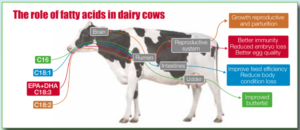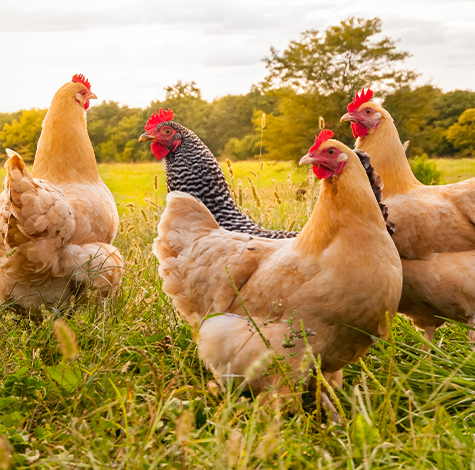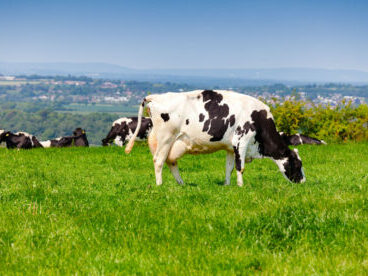Fatty acids play a vital role in making cows as efficient as possible, maximising cost- effective production while keeping them healthy and fertile.
Feed balanced fatty acids for efficient healthy cows
Fatty acids play a vital role in making cows as efficient as possible, maximising cost- effective production while keeping them healthy and fertile. But as UFAC’s Joe Magadi explains, all fatty acids are not the same and it is crucial to provide the ones your cows need. Fatty acids are used in different ways by the cow. We need to feed the right fats in the right form to deliver the results. Get it wrong and feed costs will increase with no improvement in performance.
Rumen health
The rumen is king and we must do all we can to keep it healthy as it is the engine of performance, providing the nutrients for milk yield and compositional quality. We need to keep it digesting fibre effectively, making full use of forages which make up over 60% of total dry matter intakes. There is no direct fatty acid digestion in the rumen. However, fatty acids can be degraded in the rumen and this is not a good thing. When they are degraded, rumen fibre fermentation is compromised, resulting in reduced rumen efficiency leading to depressed forage intakes and lower production from forage. Once fatty acids have passed through the rumen, they need to be absorbed quickly. C16:0 fatty acid is mainly utilised in the udder, and as such supplies little energy for maintenance. If only C16:0 is fed, there is a real danger that the effective energy in the diet will be over-estimated, meaning the cow will be short of energy. Furthermore, C16:0 fatty acids do not supply any of the essential fatty acids which are required by every cell in the body. We see the essential fatty acids as C18:1 (Oleic), C18:2 (Linoleic), C18:3 (Linolenic), C20:5 (EPA) and C22:6 9 (DHA). These help reduce insulin resistance and boost the immune and reproductive systems while suppling energy to help reduce the impact of negative energy balance, helping keep cows more fertile, healthy and productive.
Boosting butterfats
A big benefit of getting the fatty acid balance right is improved butterfats. Up to 69% of butterfat is saturated fats which primarily come directly from the diet. On average at least 25% of butterfat is a direct result of VFAs in the rumen, which means that dietary fats contribute significantly to butterfat production. The fatty acid breakdown of butterfat is remarkably consistent. Typically around 32% of butterfat will be C16:0, 25% will be short chain fatty acids, while 11% will be C18 saturated fatty acids. About 31% will be unsaturated fatty acids. If the diet is short of rumen-inert C18 and unsaturated fatty acids, feeding C16:0 alone will not increase butterfat yields as it can only ever be c.35% of the butterfat produced.
Practical implications
Fatty acids are a crucial component in diets, helping increase energy intakes to make the best use of forage, keep cows healthy, support milk prices and margins. You need to feed the balance of fatty acids that cows require at different stages of lactation and that can be utilised most effectively. A failure to do so can lead to a disappointing response and reduced margins, so consider the following points for an effective ration:
1. Focus on rumen health. Without an effective rumen, dietary fatty acids will not have the optimal effect. They are not a band-aid for an ineffective base diet.
2. Ensure all fatty acids fed are rumen-inert so they do not disrupt fibre digestion.
3. Feed a balanced blend of fatty acids. Single C16:0 products will not deliver the most effective response.
4. Ensure you supply the essential C18 fatty acids which have an effect in all the systems of the cow. A shortage can cause significant problems.
5. Add EPA and DHA from marine sources to help improve overall fertility and herd health, boosting the immune system.
The UFAC range contains products balanced for different systems. For early lactation cows consider Utopia or Dynalac. If you run high and low yield groups then a strategy of Dynalac to the high group and Omega Cream to low yielders will meet all requirements. If cows are run as one milking group, then Supa-Cream fits the bill.


 Back to News
Back to News 




